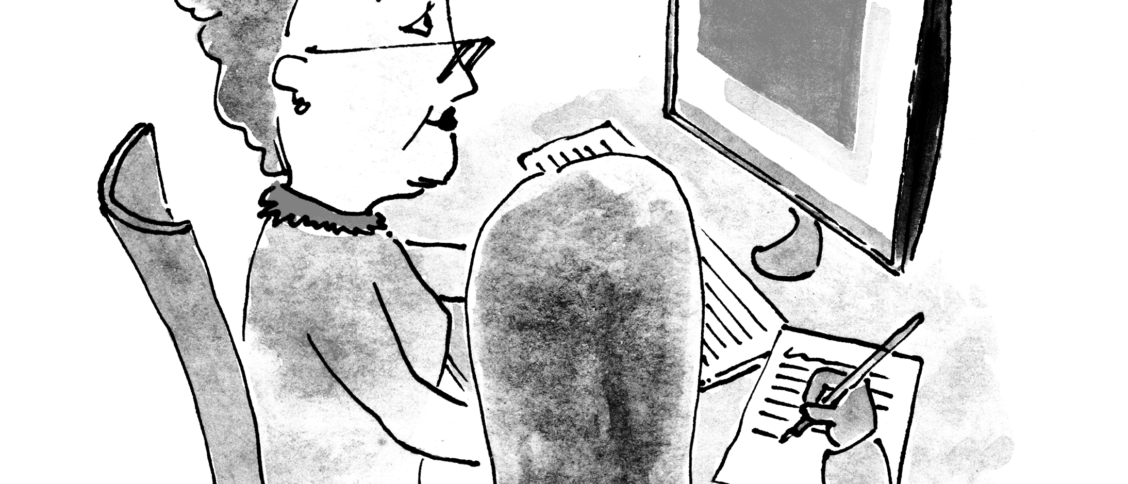UX research has borrowed a lot from the fields of psychology, sociology, and anthropology. From analysing behaviour to documenting how people perform certain tasks, you clearly see these fields bleeding into UX. In fact, some even say that those who have studied anthropology are already well trained for being a UXer.
Observational research is a powerful research technique – one of the many popular qualitative methods used in the industry. The information gleaned from observational research helps you discover what your users think and experience, and how you can fix problems they face.
What is qualitative research?

Research observations fall under the umbrella of qualitative research, so let’s dive into definitions.
Qualitative research is exploratory, and it delves deep into the thoughts, feelings, and behaviours of your participants. It gives us an opportunity to identify problems and uncover answers for questions we didn’t know we had by tapping into the minds of our research participants.
Qualitative research takes a number of different forms, such as interviews, focus groups, and usability testing, and many of these methods involve writing research observations. As you can see by these types of research methods, each one provides a forum for people to discuss a topic in depth to provide quality insights.
Some of the many benefits of using qualitative research are:
- It provides in-depth data that can help you make informed decisions (instead of just percentages and statistics that you get from quantitative data)
- It gives you information on how the product or item you’re testing actually fits into the lives of your users
- It’s powerful in small quantities. Unlike quantitative research, you don’t need lots of participants in order to get great results from it
What are research observations?
Researchers Catherine Marshall and Gretchen Rossman defined observations in their book “Designing Qualitative Research” as “the systematic description of events, behaviours, and artefacts in the social setting chosen for study”.
In the case of UX research, these are things that happen when you’re watching people perform certain tasks or when you ask them interview questions.
For example, when conducting a usability test, a research observation would be something the researcher sees or hears — something that provides insight into what the research participants are doing, thinking and feeling. This could be that it took 10 minutes for the participant to find the login screen of the website you’re testing, and the participant expressed frustration.
There are various kinds of observations you can note down in your research. A paper from Michael Angrosino, citing research from Oswald Werner and Mark Schoepfle, identifies three different kinds of observational research processes.
- Descriptive observation: The researcher observes and notes down everything that occurs. This can produce a lot of data — some of which may be relevant and some irrelevant to your study. An example of a descriptive observation is noting down the sounds going on in the background when a user testing session is being held.
- Focused observation: The researcher will only analyse material that’s relevant to what the researchers are studying. For example, the facial expressions a participant makes when trying to perform a specific task, or tracking the gaze of a participant.
- Selective observation: The researcher looks at specific activities. For example, the way each participant navigates the menu on the homepage.
Interestingly, authors Robert M. Emerson, Rachel I. Fretz and Linda L. Shaw penned similar thoughts in their book “Writing Ethnographic Fieldnotes”. According to the authors, writing field notes (which are research observations) “is not a matter of passively copying down ‘facts’ about ‘what happened’. Rather, these descriptive accounts select and emphasise different features and actions while ignoring and marginalising others.”

Research observations, once collected, allow you to drill down deeper into the behaviours of your users. Observational research can also help you to verify or explain other kinds of research you have collected or are collecting, such as a Treejack study or other methods of remote user testing. Remember, what your users may say in a study might not be what they’re actually thinking or feeling. Observational research will help you get over that hurdle.
Tips for writing better research observations
When it comes time for you to begin your research and note down your observations, keep these tips front of mind.
- Write your research observations at the time of your research session. If you’re unable to do this, make sure you jot them down as soon as the session is over. They’ll be much fresher in your mind then!
- If you’re part of a research team, don’t discuss the session with your teammates until you’ve compiled all your observations. You might find yourself incorrectly recalling things that happened during the session. However, make sure you go through your observations with the rest of your team when you’re all done writing up your notes. This will help you spot trends in your data.
- Always record the audio in your sessions. If you can, use video as well so you can capture facial expressions, body movements and things going on in the background.
- While you’re recording your session, write down timestamps for anything important. For example, you might note down the timestamps for the different parts of the site you discussed with your participant.
- Include smaller details in your observations. Sometimes, the littler things can have a big effect. For example, a participant using a mouse without a mouse pad could have contributed to their frustration at trying to navigate your site.
- Don’t neglect the big things either. Conducting research can be exciting. So exciting, in fact, you might just forget a few key details like jotting down your participant’s name and role in the research session. Templates and generic forms can be handy for jogging your memory.
- Once you’ve finished taking your notes, import them into Reframer for a headstart with sensemaking. Alternatively, take Reframer with you and jot down observations as you go.
You might be about to embark on a qualitative research project for the first time, or a seasoned veteran. Either way, I hope you’ll be able to record better observations using Optimal Workshop’s qualitative research tool Reframer.
Whether you’re researching alone or as part of a team, just remember that preparation, detail, and organisation are key to helping you get great research results. Happy testing!






That’s a great piece of information..